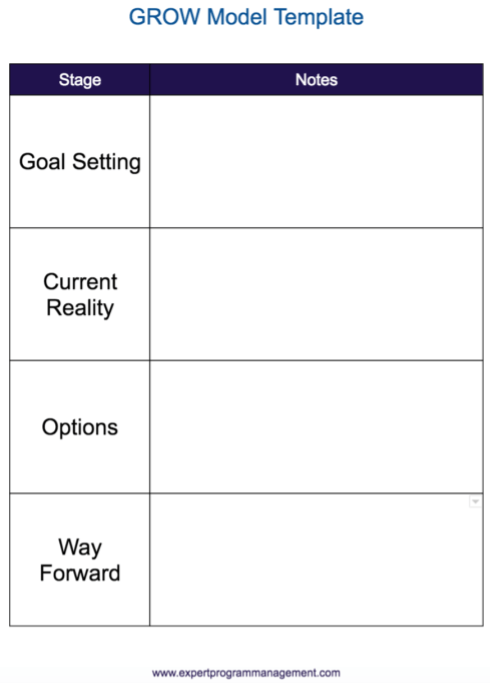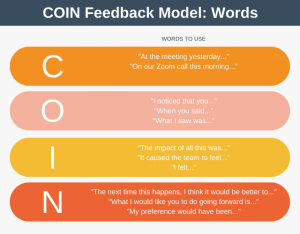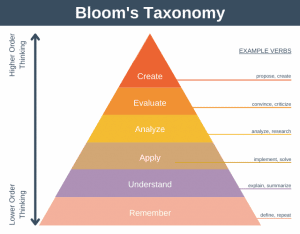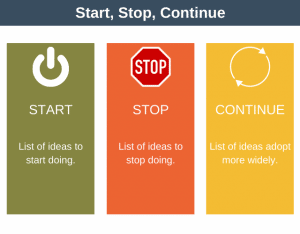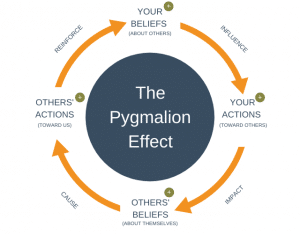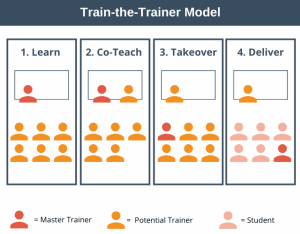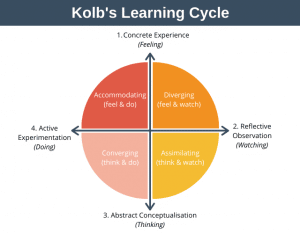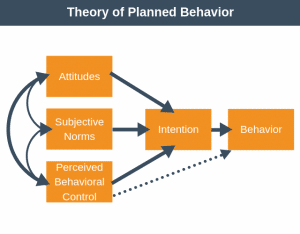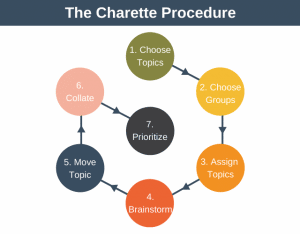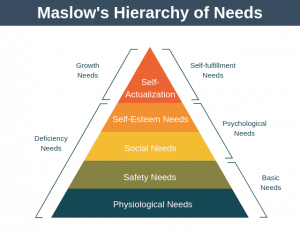The GROW Model can help you develop the capabilities of your team, and developing the capabilities of your team is one of the most important jobs of a leader. But don’t just take our word for it – here are some quotes by leading figures on the importance of developing your team:
- “The growth and development of people is the highest calling of leadership.” Harry S. Firestone
- “Take care of our people and the business will take care of itself.” Ray Kroc
- “Before you are a leader, success is all about growing yourself. When you become a leader, success is all about growing others.” Jack Welch
- “When it comes to business success, it’s all about people, people, people.” Richard Branson
We can see from these quotes, and hundreds more like them, that coaching and developing your people is really important. But if you are new to coaching and haven’t coached people before, how do you get started?
There are actually lots of frameworks and resources to help you, but the one we’re going to be looking at today is called The GROW Model. The GROW Model provides a simple framework which can be implemented over a series of one to one coaching sessions, to help a team member develop particular skills or reach their potential for a given goal.
The GROW Model Overview
GROW is an acronym standing for Goal Setting, Current Reality, Options, and Way Forward.
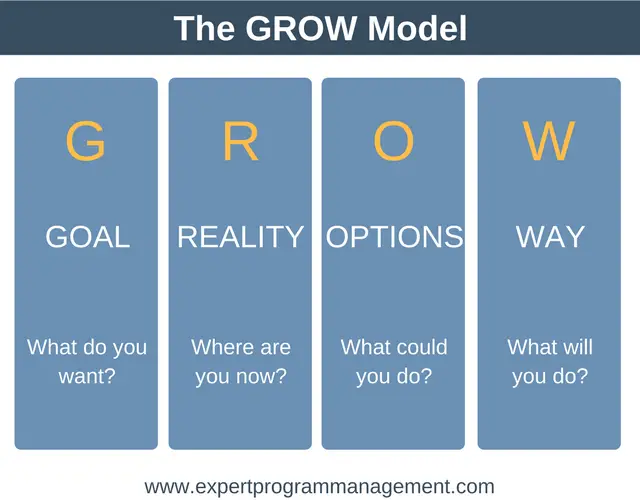
An easy way to think about the model is to imagine you’re going on holiday. First, you must decide where you would like to go (your goal) from your current location (your current reality).
Once you’ve decided where you want to go and from where the next step is to investigate the options for the journey (Options), for example, is flying best and if so which airline is best for you? Finally, you must commit to starting to take action (way forward) to ensure the trip happens, for example, getting time off work if necessary, booking a hotel etc. Essentially, this stage is about committing to what will happen and when.
Let’s examine each of the stages in more detail.
1. Goal Setting
The first stage of The GROW Model is to agree with your team member what goal they want to achieve.
It is important to help your team member select goals that are SMART: Specific, Measurable, Attainable, Realistic, and Time-bound. You can read more about goal setting in this article.
As a coach, you may not be overly familiar with what your team member wants to achieve. They may not even be clear about what they want themselves. Because of this, a big part of goal setting will be to ask probing questions about what they want to improve their career or on the job performance, to guide them towards selecting a goal.
Finally, if you are also the team members boss as well as a coach, you have to balance choosing goals to develop the team members skills, but which also contribute to near-term business performance. This means you shouldn’t coach someone out of your organization – we don’t want to coach them only for them to immediately leave.
2. Current Reality
Once the goal has been selected and agreed, the next step of The Growth Model is to reality check the team members current situation.
This step is important as without understanding exactly where they are right now, it will be difficult if not impossible to accurately assess if they have made progress.
Useful questions for you as a coach to ask during this stage include:
- What action have you already taken to achieve this goal? If no action has been taken then explore why not.
- How confident are you in achieving this goal?
- Is there anything that scares you, or evokes an emotive response, about the steps which need to be taken to achieve this goal? Essentially we’re trying to understand what barriers might stop them from achieving the goal, or if they have assumptions in place that are not helpful.
It can also be useful sometimes for the coach to collect colleague feedback and examples of previous performance in advance of the meeting if you think it could be useful.
3. Options
Once your team member is aware of where they want to go and fully aware of their current situation, it’s time to explore all the different options at their disposal to equip them to reach their goal.
There are two parts to this stage. The first is to make a list of all options, and the second is to evaluate and rank each of the options in turn.
This conversation will be 2-way with both you and the team member identifying options to achieve the goal.
Some useful questions which can help you as a coach are:
- What are the advantages/disadvantages of that option?
- What is the biggest barrier to choosing that option?
Sometimes during this stage, you’ll hear negative feedback such as, “I don’t have the time” or “I can’t do that because of X”. In this case, work around these issues by asking what difference it would make if that constraint didn’t exist, and work with your team member to remove the constraint. Often the constraint will be imagined rather than real, but you’ll need to work with the team member to help them reset their beliefs around what is and isn’t possible.
4. Way Forward
In the final step of The GROW Model, the way forward is agreed. At this stage, your team member should have a good idea of what needs to be done but this stage is all about getting them to commit, so as they completely buy-in to both the goal and the actions necessary to achieve it, and feel confident they can indeed achieve it.
A good way to perform this step is to have the team member playback their plan to you along with the milestones along the way. There are lots of questions you as a coach can ask to aid this conversation:
- When will that be done?
- Do you think that action will really help you reach your goal?
- What support do you require?
- Who do you need to inform that you are taking these steps?
- How confident are you that you will carry out the steps we’ve agreed?
- If you’re not 100% confident, then why not?
GROW Model Example
In this example, we’re going to consider John, who’d like to be promoted to a project manager.
In the first stage of coaching John, we help him to set his goal by making it SMART. In this case, he’d like to be a project manager within 18 months.
The second stage of coaching John is to understand his current reality. John is currently working as an engineer but has shown good teamworking skills in meetings, however, he has no formal project management training under his belt and no previous experience of project management. Meeting the challenge of becoming a project manager in 18 months is going to be challenging, and John’s performance in his current role is 7 out of 10 (good).
The third step of coaching John is to look at all the possibilities for John to move forward. Should he shadow someone? Should he get some formal project management training? Should he take on a small project within his current team? Should he improve his performance within his current role to stand a better chance of promotion? During this step, the coach also helps John to understand the advantages and disadvantages of each option.
Once John and his coach have examined all the options, it is time for the final step of The GROW Model where John commits to a course of action. In this case, it is decided that John will improve his performance in his current job within 12 weeks, then go on a formal project management course, then shadow someone for another 12 weeks. If John’s current job performance is still at the new higher level at this point then he can start taking on projects within the team.
Key Points
Developing your team is important, and The GROW Model provides a simple 4-step process to enable to coach your team members on a one-by-one basis both improve their current performance and move closer to their longer-term career objectives.
The GROW Model acronym stands for:
G – Goal Setting
R – Current Reality
O – Options
W – Way Forward
GROW Model Template
We’ve put together a handy GROW template for you to use. You can download a GROW Model template as a PDF here.
